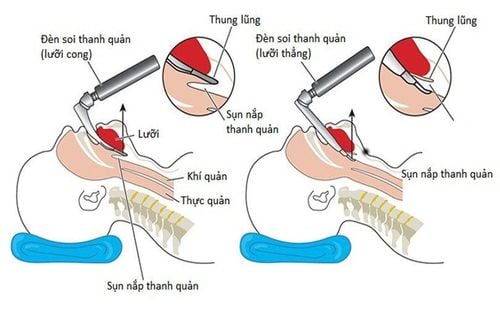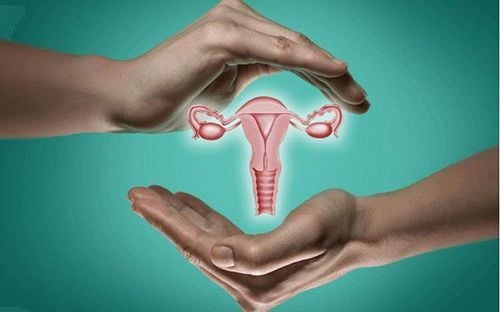This is an automatically translated article.
The article was professionally consulted by Specialist Doctor I Nguyen Xuan Tinh - Anesthesiologist - Resuscitation - Department of General Surgery - Vinmec Phu Quoc International General Hospital. Doctor Nguyen Xuan Tinh has more than 18 years of experience studying and working in the field of Anesthesia - Resuscitation.Low deviation is one of the common birth defects of the penis in boys. Deformities can cause infertility and affect future sex. Therefore, children need to be treated with low deviation urinary tract early, with severe cases need surgery to correct low deviation urinary tract with endotracheal anesthesia.
1. Common low deviated urinary tract malformations
Children with low urinary tract defects often have major lesions including: The child's urethral mouth is located lower than the normal position compared to the top of the glans from the penile groove to the perineum and there is a lack of skin on the positive abdomen. The penis as well as the penis is bent to varying degrees depending on the lesion.Common low varicocele malformations include:
Anterior body (mild form): The urinary opening of boys is located in the glans or glans sulcus, this form accounts for 50% of the middle body (moderate form): The patient's urinary opening is located in the anterior 1/3 as well as the middle 1/3 of the penis, this type accounts for 30% of the proximal body (heavy body): The patient's urethra is located in the posterior 1/3 of the penis, scrotum and floor. Young genitalia, this body accounts for 20%.
2. Causes of low deviation urinary tract malformation

2.1 Polygenic The cause of low urinary tract is now thought to be polygenic because the prevalence of this defect is very familial. The malformation has a familial tendency with 8% of boys with urogenital tract having a father who also had urogenital stagnation and 14% of the patient's siblings with urogenital stagnation. If there are 2 family members with low urinary tract infection, the risk of having a baby with low urinary tract infection is up to 21%.
2.2 Environmental and Endocrine Factors Environmental and endocrine factors have also been implicated in this malformation. Environmental factors that can lead to malformations include: Effects from pesticides and estrogen.
2.3 Other factors In addition to the above factors, some other factors also cause malformation of the lower slanted urinary opening:
Lack of factors that help develop epidermal skin on the abdomen of the patient's penis. . The patient has a vascular defect, there is no artery supplying the distal urethra in the urinary opening. Enzyme factor (enzyme). In vitro fertilization also contributes to the increased incidence of low urinary tract in children.
3. At what age should a child have low ectopic surgery?
In the treatment of low deviation, the patient will need surgery to correct the deformity. The most appropriate age to perform low slit-hole surgery is from 3 to 6 months of age until the child is 18 months old.The reason the baby should be operated on before 18 months of age is because when he grows up, he will not remember what happened before that age, helping him avoid guilt later. Moreover, in this age group, surgery for low slit-hole malformation will also have a higher success rate than late surgery.
However, for special cases such as children with small penises, surgery will be later. The timing of surgery is when in these special cases will be decided by the specialist.
4. Treatment of low deviation urinary hole

In some cases with very small malformations of the lower urinary tract, a simple procedure is sometimes needed. As for the cases of malformation of the urethral opening, which is too far from the tip of the penis and the penis is severely deformed, the doctor will appoint surgery when the child is between the ages of 6 and under 15 months. .
5. Low deviation urinary tract surgery
The day before surgery, your child will usually be asked not to drink or eat anything after midnight the night before surgery or at least 6 to 8 hours before surgery. In case the child must take medicine, it is necessary to consult a doctor as well as the child should only take the medicine with a small sip of water. When the surgery begins, the baby will be under general anesthesia. Endotracheal anesthesia will be administered to control the patient's breathing during surgery as well as post-operative resuscitation. In mild cases, the doctor will operate on low deviation urinary hole and create one stage. The doctor will use a small piece of foreskin or tissue in another location to create a tube to increase the length of the urethra for the baby. During surgery, the doctor will insert a catheter into the child's urethra. This catheter can be sewn or secured to the tip of the baby's penis. One to two weeks after surgery, the catheter will be removed once the wound in the child's new stoma has healed.Please dial HOTLINE for more information or register for an appointment HERE. Download MyVinmec app to make appointments faster and to manage your bookings easily.














